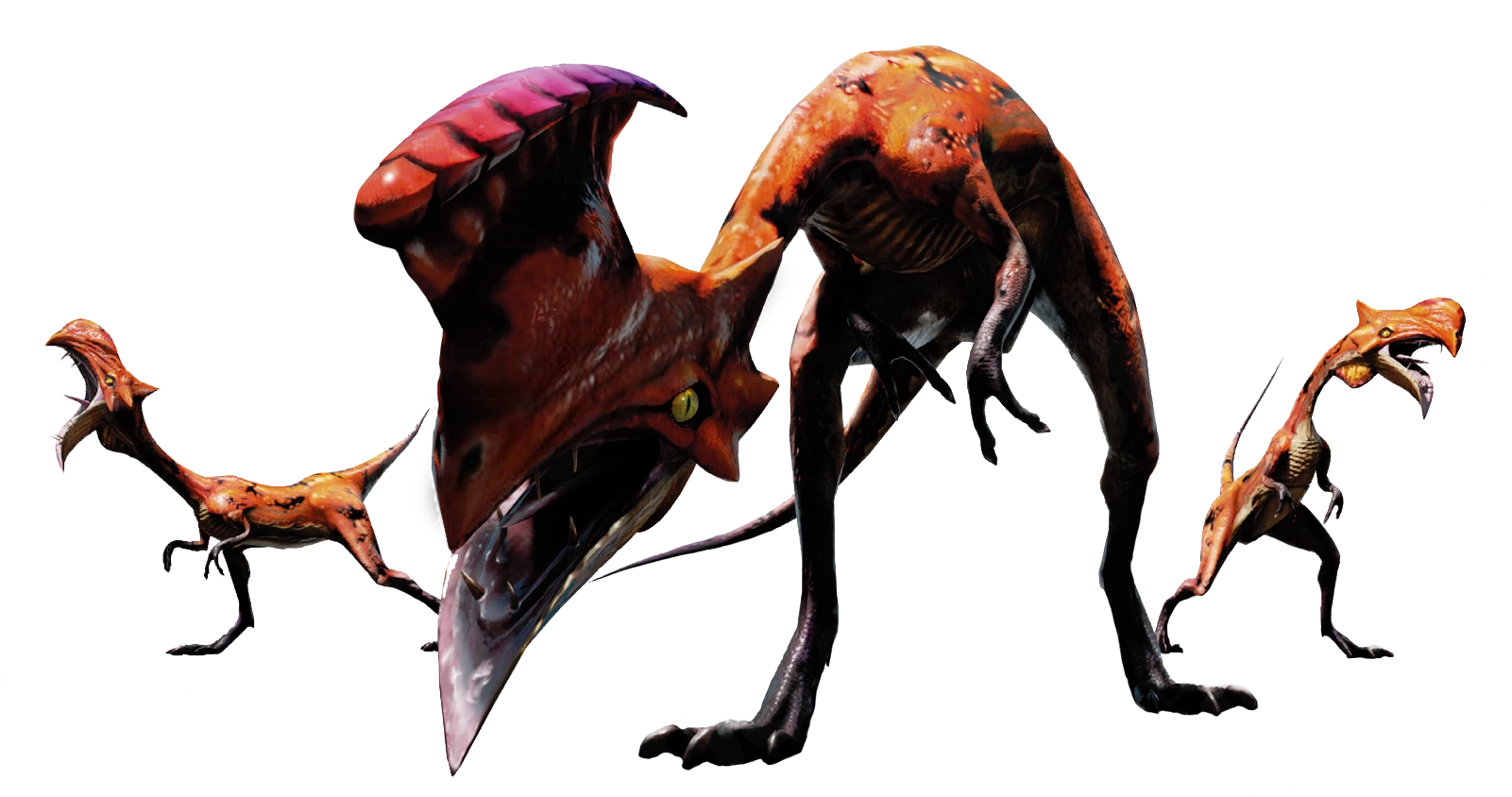 Social pack-hunting Bird Wyverns covered with a slimy orange salamander-like hide with black blotches. They have a single crest located on their snouts and small horns on the back of their heads. Their forelimbs only have two clawed digits each, and each of their hindlimbs lack the enlarged claw on the first digit found in its close relatives. They instead rely more on their poison which can be spat out or administered through the four pairs of venomous fangs in their beaks.
Social pack-hunting Bird Wyverns covered with a slimy orange salamander-like hide with black blotches. They have a single crest located on their snouts and small horns on the back of their heads. Their forelimbs only have two clawed digits each, and each of their hindlimbs lack the enlarged claw on the first digit found in its close relatives. They instead rely more on their poison which can be spat out or administered through the four pairs of venomous fangs in their beaks.
Mature adults are known as Iodromes while immature subadults are known as Ioprey. As the alpha leader of the pack, Iodromes are larger in size and have a much larger and more prominent purple-tipped crest. These crests are probably used for sexual appeal by showing that the Iodrome is sexually mature and may have a thermoregulative role in scorching volcanic areas. Packs are only led by one dominant Iodrome, as the other adults are chased away upon reaching maturity to look for another pack to take over. [It's probable that a breeding Iodrome pair will temporarily unite their packs during the breeding season.]
Ioprey and Iodrome packs can be found in a wide variety of areas from jungles to mountainous areas to swamps and even volcanoes. This is due to the fact that they prey mainly on Neopterons such as Vespoid and Hornetaur, which is also the main reason for the evolution of their poison sacs and [their mostly toothless beaks which are used to crush Neopteron shells. Thus, they are able to survive in a broad spectrum of harsh and less fertile environments where large Herbivores are less plentiful.] However, given the chance they will scavenge for carrion or hunt for any large monster their poison can bring down, which includes Herbivores like Apceros, Aptonoth and Slagtoth and even small Bird Wyverns such as Yian Kut-Ku. They are a major hazard to miners as they frequently dwell in volcanic mining tunnels. [Other than that, their amphibian-like skin keeps them cool in hot volcanic areas as the mucus evaporates, acting like a form of perspiration.]
Despite being quite low in the food chain, Ioprey and Iodrome are not often hunted by larger wyverns, as even their scales and bones are filled with toxins. Their bright aposematic coloration of their hide acts as a warning to potential predators. Their speed and agility also discourages predators from attacking them.
Ioprey and Iodrome are closely related to Velociprey and Velocidrome, Genprey and Gendrome, as well as Giaprey and Giadrome.
Ioprey and Iodrome are closely related to Velociprey and Velocidrome, Genprey and Gendrome, as well as Giaprey and Giadrome.
No comments:
Post a Comment